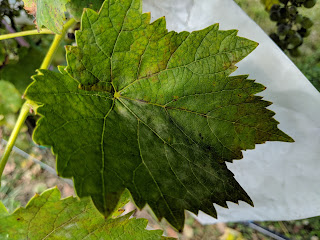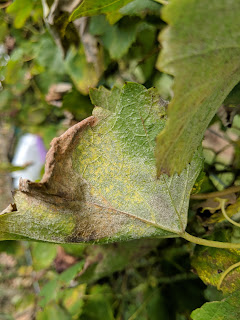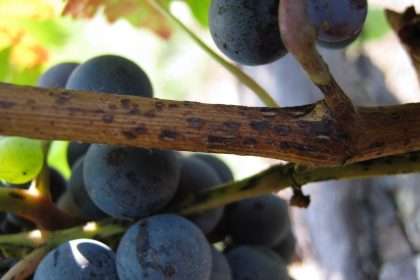I heard from many that their fruits are ~2 weeks ahead of “average” season, and some early cultivars are already harvested in the southern VA. I should have posted this earlier, but it probably is still applicable to many of us, so, here is a list of fungicides with PHI (Pre-Harvest Interval) equal or shorter than 7 days. (the list is the same as in 2018, I did not see any additional material with PHI >= 7 days. If I missed any, please let me know.) I cannot cover every single fungicide out there, but I tried to cover common ones. Winemaking considerations can influence fungicide uses close to the harvest too. Make sure to communicate with your winemaker(s) if they have a preference on the use of fungicides, especially copper, sulfur, and captan (I listed several copper materials because they have different PHI or REI.)
Please make sure to rotate mode of action. For instance, Botrytis pathogen is well known for quickly developing fungicide resistance, and this pathogen can be resistant to multiple fungicides. I prefer to see a mode of action to be used twice or less per season, especially when we deal with Botrytis (with an exception of fungicides with FRAC code starting with “M”). In addition to proper leaf removal and chemical approach, wound management is very important to reduce the risk of Botrytis. Managing the source of wounds such as insects (esp. grape berry moth), or birds, or powdery mildew at early in the season, can positively impact Botrytis management. Also, I should note that sour rot pathogens also go after wounds.
At Winchester, the night time relative humidity has been very high, above 95%, for four nights in a row. In addition, we have been observing the rapid development of thunderstorms, pretty much every day in the past few days. These conditions favor downy mildew development because downy mildew pathogen prefers to produce spores under dark, humid conditions. Then spores will be spread via rain.
At this point, you do not need to worry about downy mildew infection on clusters; however, they can still infect leaves. Often time, you will initially see infection on the top of the canopy because younger leaves are more susceptible than older ones. Losing the top leaves and laterals are not a big deal; however, once the infection gets severe, it can defoliate many leaves rather quickly (as in the picture below). If you start to lose older leaves, it can affect the maturing process. Since many of us have been having a relatively dry season, you probably do not need to spray expensive materials, but it is probably not a bad idea to use captan or copper or phos acid in your next spray. (but once again, please consult with your winemaker about the last spray of captan or copper that they would like to see. Often time, we say it is better to avoid captan or copper or sulfur within a month of harvest.)
Good luck with the rest of the season!





